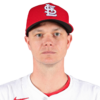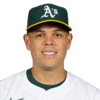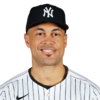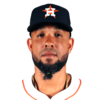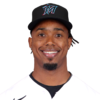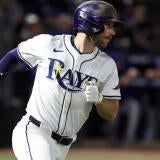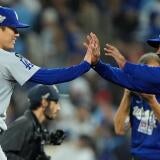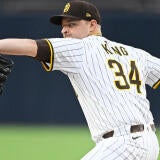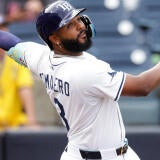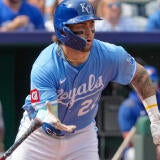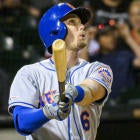Fantasy Baseball Dynasty Update: Players, prospects who've gained the most value include Jeff McNeil, Will Smith
What recent developments could have longstanding effects? Scott White considers things from a dynasty perspective.
Three quarters of the way into 2019, some of us are already thinking about next season.
The dynasty format makes it pretty easy. We're tied to these players for the long haul, after all, so it's helpful to know which of the more recent developments could have a longstanding impact.
That's what I'm here to sort out: the biggest risers and fallers from a long-term perspective. With the stakes being so high, the takes have to be truer than ever, and it's with such conviction I can confidently say my approach to the players listed here has changed from a quarter of the season ago.
I've been doing these dynasty check-ins quarterly, you see. Here's the one from about the midpoint of the season, and here's the earlier one from mid-May.
Again, the focus here is on the long-term. What matters more than the rest of this season is next year and beyond.
Players who have gained the most value in dynasty
Yordan Alvarez, OF, Astros
Alvarez had long been an also-ran in the Astros' pipeline of high-impact bats, appearing on all the right lists but never with the fanfare of a George Springer, Alex Bregman or Kyle Tucker. Even when he set the Triple-A level ablaze for the first two months this year, there were concerns whether he was simply taking advantage of a juiced ball and a hitter-friendly environment. But he has homered at about the same pace over about the same period in the big leagues, giving him an astonishing 42 long balls for the season, and between the plus plate discipline and high barrel rate, his expected stats (xBA, xwOBA and the like) go most of the way to validating what's obviously been first-round production.
Jeff McNeil, 2B/3B/OF, Mets
What's most interesting about McNeil's second-half power surge, during which he's hit more home runs (eight to seven) in less than half as many games (29 to 76) as the first half, is that it's not like it came out of nowhere. The 27-year-old hit 19 home runs in 88 minor-league games last year, with most of them coming at Double-A Binghamton rather than the hitter's haven of Triple-A Las Vegas. Even without the power hitting, he was still resonating in a power-laden environment with a high-contact swing that's perfectly tailored for batting average. Now that it's looking like he may go full Daniel Murphy with the power, he's one of the true elites at second base moving forward.
Sonny Gray, SP, Reds
What a roller-coaster ride it's already been rostering Gray in dynasty, assuming anyone's stuck with him through all the ups and downs. But he may be introducing his best version yet this year — one that combines the swing-and-miss slider first emphasized a couple years ago with the put-it-over-the-plate sensibilities of a ground-ball specialist. After the Yankees tried eschewing the former for the latter last year (with disastrous results), Gray has gone back to getting ahead with his fastball but now also knows how to put away hitters. Not only has it given the 29-year-old a 1.43 ERA, 0.91 WHIP and 11.3 K/9 over his past eight starts, but it's catapulted him back into the ace conversation at a time when aces are the only real currency at starting pitcher.
Will Smith, C, Dodgers
If you had skimmed far enough down the Dodgers prospect rankings over the past couple years, you might have spotted Smith's name, but he was so obviously behind Keibert Ruiz in the pecking order that it seemed like the only possible roles for him would be as a defensive-minded backup or maybe an outfield hybrid. An offensive explosion in which he cut his strikeout rate in half while building on some of his earlier power gains put him on the fast track to the majors this year, where he has been a revelation. With a combined 30 homers between the majors and minors this year — only four away from Gary Sanchez's combined high, mind you — It's not far-fetched to say he's already a candidate for best at a weak position next year.
Gio Urshela, 3B, Yankees
How can I be so confident in a 27-year-old Cleveland castoff who wasn't even rostered in half of CBS Sports leagues just three weeks ago? It's going out on a limb for sure, but part of what makes Urshela an obvious riser is his Johnny-come-lately status, which isn't to say I'm merely chasing the hot hand. From the underlying numbers, I'm having a hard time deducing why Urshela wouldn't be good, if not great. The contact skills have always been plus-plus, and the power breakthrough is backed up by his launch angle and hard-hit rate — both of which have been consistent from the start, even if his playing time wasn't. Miguel Andujar's dynasty appeal may be in serious jeopardy.
Prospects who have gained the most value in dynasty
Gavin Lux, SS, Dodgers
AA/AAA: .354 BA (427 AB), 24 HR, 24 2B, 1.041 OPS, 56 BB, 96 K
It may be obvious now that Lux is one of the prospects we're most eager to see in the majors, but the journey we've taken from acknowledging he's another name to know to hyperventilating at the mere mention of said name has been an abrupt one. The catalyst of course has been his absurd production at Triple-A, where he's hitting .417 with a 1.262 OPS, and given that the scouting reports are similarly favorable, he's shaping up to be one of those prospects you build around.
Dylan Carlson, OF, Cardinals
AA/AAA: .290 BA (438 AB), 22 HR, 18 SB, .905 OPS, 55 BB, 104 K
The Cardinals moved Carlson so quickly through their system that we didn't get a chance to see any real production from the 20-year-old until this year, during which he has looked powerful and polished at the most advanced levels. There's still time for growth, clearly, and yet the strides he has made this year will have him knocking on the door as early as next spring.
Tarik Skubal, SP, Tigers
A+/AA: 6-6, 2.36 ERA, 1.01 WHIP, 114 1/3 IP, 33 BB, 164 K
Drafted in the ninth round last year, Skubal is already at his fifth minor-league stop, and the way he's passing the latest test at Double-A, piling up double digit-strikeout efforts despite consistently being limited to five innings, suggests it should be smooth sailing for the 22-year-old straight into the big leagues. With an especially lively fastball for a left-hander, two plus breaking balls and a deceptive delivery that features a high leg kick, he offers plenty of reasons for optimism.
Julio Rodriguez, OF, Mariners
A/A+: .304 BA (270 AB), 11 HR, 21 2B, .881 OPS, 20 BB, 66 K
Rodriguez was one of the more buzzed-about 18-year-olds coming into the season, but when assessing players that young, it's largely a crapshoot who's going to step up and meet the hype. His production becomes all the more impressive when you consider how young he is for the level, and with his mature approach and plus-plus raw power, his star should continue to ascend from here.
Seth Corry, SP, Giants
Class A: 9-2, 1.74 ERA, 1.04 WHIP, 108 1/3 IP, 52 BB, 155 K
Poor control has prevented Corry's stuff from getting the recognition it deserves, but with just 1.8 BB/9 over his past nine starts, it's fair to say he's making progress in that area. He's clearly too good for his level now, compiling a 0.73 ERA, 0.64 WHIP and 12.6 K/9 during that nine-start stretch, and his electric fastball/curveball combo should be enough to overwhelm hitters at the upper levels, too.
Players who have lost the most value in dynasty
Giancarlo Stanton, OF, Yankees
Losing a season to injuries — not just one, but a multitude — is itself enough to make a player appear broken down, but for Stanton, there was already a growing belief he's post-prime and nearing the end of a Ryan Howard-like trajectory. His strikeout rate spiked in his first year in New York, and while his ability to hit the ball out of the yard is hardly in question, that particular skill isn't in such high demand anymore. Granted, Stanton's supporting cast in New York will help his productivity play up, but particularly if you're approaching it from a long-term perspective and not just going season by season, the juice may no longer be worth the squeeze.
Mashiro Tanaka, SP, Yankees
Tanaka has often frustrated for being worse than it seems like he should be, but his struggles this year are completely deserved. The splitter just hasn't been there for him. He's gotten about half as many whiffs as usual with it, and you see the impact it's had on his strikeout rate. Predictive metrics like xFIP and SIERA make him out to have exactly the mid-fours ERA he does, and that's nothing to write home about it. Now, maybe he'll get the splitter back — who can say for sure? — but considering he hasn't been the most reliable option over the years anyway, it stands to reason he won't have too many backers heading into his age-31 season.
Jose Abreu, 1B, White Sox
Abreu will be 33 next year, and his numbers are beginning to show it. He hasn't been a disaster this year, clearly, but the skills erosion has continued at a time when league-wide production has taken a step forward. He doesn't get a pass again for the middling batting average, and the strikeout and walk rates are both the worst they've ever been. He has become just another boring slugger in a landscape littered with them, and he's more likely to get worse than better from here.
Jean Segura, SS, Phillies
Segura, like Abreu, is feeling the sting of decline twice over given that so much of the position around him has improved. He was expected to run less on a Gabe Kapler-managed team and has, but the corresponding power increase from playing half his games at Citizens Bank Park hasn't come to fruition (mostly because he's been so bad on the road). He'll be 30 next year, an age that hasn't been kind to shortstop historically, and seeing as there are probably 15 regarded as having more upside now, he's more like a spare part than some sort of prize.
Paul DeJong, SS, Cardinals
Somehow, the fakeout from that first month in which he was striking out less and hitting line drives everywhere makes it seem all the more definitive that DeJong simply is what he is at age 26. His percentages have regressed to almost to exactly the place they were last year, but he's been near unusable since April, batting just over .200 with an OPS under .700 during that time. And if you think Segura doesn't stand out in today's shortstop environment, what about a guy who not only doesn't walk but doesn't run and doesn't hit for average? Any Freddy Galvis can pop 20 homers these days, so DeJong probably isn't who you want locked into your shortstop spot long-term.





